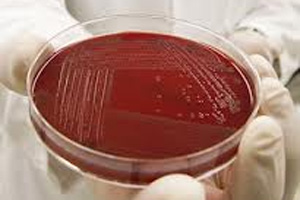Campylobacter infections in man – is it a pig problem?

The transmission of campylobacter, the commonest cause of gastrointestinal bacterial infections in humans is commonly blamed on meat contamination. Is it spread via pig meat to man?
The good news is – it is not. If it is not, then why does the pig industry constantly get battered about the transmission of zoonotic infections and they always lump together campylobacter with salmonella. Antimicrobial resistance associated with campylobacter is always an extension of the issue. Campylobacter coli is the major pig species and it can cause diarrhoea in man, if they become infected. However, the organism is quite fragile and clean carcass processing and chilling, which helps destroy the organism means that contamination of carcasses is extremely low. A recent EFSA Report (2011) put it at 0.6% of pig meat was positive for campylobacter, 0.5% beef in comparison with 31% of chicken meat samples. Broiler carcasses were also reported to be 75.8% (range 3.8-98.6%) contaminated across the EU in another EFSA survey. In human terms, 198,252 cases were reported in 2009 in the EU and an estimated 9 million cases went possibly unreported. This caused also 40 reported deaths, so can be considered an important infection in man.
In the US, the National Antimicrobial Resistance Monitoring System (NARMS) Report (2012) showed that 38.3% of chicken breasts were contaminated with campylobacter and C. jejuni accounted for 70.3% of isolates and C. coli was 29.3%. In human cases C. jejuni was 88.4% and C. coli was only 8.8%. Ground turkey meat showed only a 1% contamination rate and in 2008, they stopped testing for campylobacter in ground beef and pork chops, as isolation was so low.
In a recent survey in Denmark (Danmap, 2011), no C. coli isolates from human cases were included in their resistance survey as only a small number of C. coli were found. This suggests that even if C. coli from pigs was important, which is unlikely, it caused minimal disease effects in man, even though they consume large quantities of pig meat. Chickens would appear to be the most important source, as in the US.
Resistance to fluoroquinolones is a major concern, as they are of critical use in man. Campylobacter seem to develop resistance to fluoroquinolones quite easily with only a one-step mutation, whereas many other bacteria require a two-step mutation for full resistance, such as E. coli. The NARMS report looked at resistance to ciprofloxacin in humans, chickens and chicken breasts (see Figure 1).
There is some variation year on year. Fluoroquinolones were banned for use in drinking water in the US in 2005 but after an initial decline there has been a trend to increase in resistance since the ban to over 20%. This is an interesting situation.
In Denmark, in 2010, there was also an interesting scenario. Broiler C. jejuni isolates were 20% ciprofloxacin resistant, broiler meat was 17% (very similar to the US) resistant but imported broiler meat was 50% resistant. Human cases, which had acquired the disease domestically, were 25% fluoroquinolone resistant but those C. jejuni cases, which had been picked up during travels abroad, were 80% resistant (see Figure 2).
In 2010 fluoroquinolones were stopped in chickens in Denmark but surprisingly the incidence of ciprofloxacin resistant C. jejuni has gone up in broilers to 23% but down in broiler meat to 11%. The incidence in imported broiler meat has increased to 57% and both domestically acquired and travel abroad associated cases in humans have both risen to 33% and 84%, respectively, regarding ciprofloxacin resistance.
Firstly, we can conclude that the importance of pig meat in the whole campylobacter issue in man would appear negligible in comparison with chicken meat. Although not the only cause of campylobacter infection in humans, highly contaminated chicken carcasses and broiler meat is a major source of infection. Rather than just monitoring (i.e. sitting there looking at the problem) and using it to batter the agricultural and veterinary industry and banning all fluoroquinolone use, isn’t it time that EFSA and the Commission actually did something about stopping the transmission by campylobacter-contaminated chicken carcasses and meat, ideally at the slaughterhouse? What do you think?







